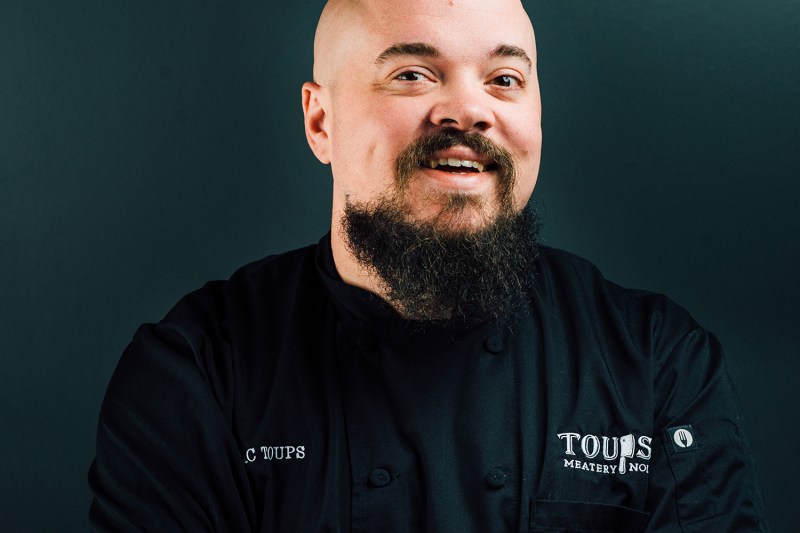
Running out of recipes to cook? Tired of macaroni and cheese (even if you’re giving it a glow-up)? Does pork and beans turn your stomach? Well, it’s time to bust out those cooking skills of yours and try a new recipe. What are we suggesting this time around? Cajun cooking and, more specifically, gumbo.
As the official state cuisine of Louisiana, it is as much the epitome of everything that Cajun cuisine encompasses. You’ve got strong flavors, protein, and the Holy Trinity of onions, peppers, and celery. In other words, it’s the perfect Cajun dish.
Holding such a storied place in a certain cuisine, though, means that there have been and will continue to be many gumbos that are not shining examples, but rather poor knockoffs that use cheap ingredients or just go about things in the wrong way.
Having spent time in Louisiana, both in New Orleans and elsewhere, we wanted to find out what real gumbo was. Not the stuff you get served to tourists on Bourbon Street for too much money, but true Louisiana gumbo. To do that, we went to a chef who has become the flag-bearer for contemporary Cajun cuisine, Isaac Toups.
Toups (who came in third in season 13 of Top Chef and is a James Beard Award finalist, is a native of the Atchafalaya Basin in Louisiana and has been around Cajun cuisine for as long as he can remember. In his new book, Chasing the Gator, he documents the recipes he’s learned and created over time, harnessing his Cajun lineage. That – and the fact that he is lauded by none other than Emeril Lagasse himself – convinced us we were in the right hands for any gumbo-related questions and concerns.
To start, we had to know, what is gumbo to him?
“A good gumbo is always going to be a good concentration of flavors,” he said. “Gumbos are reserved for land animals. These are my family’s rules. I can’t speak for the rest of Cajun country, but I know a lot of people who would find it that way.”
You can use fish, he says, but a fish gumbo is just a fish stew.
For Toups, the first experience he had with land animal gumbos was at the hunting camps his family had, where they would make wild bird gumbos. The rich flavor, combined with the terroir qualities of a wild bird (hunted over grass and grain fields as opposed to over marshes), created unforgettable gumbos.
It’s one thing to eat someone else’s gumbo, but what about learning how to make

How to make gumbo
- First, Toups said, if you’ve never made gumbo before, start with chicken and sausage. From there, you need to remember to have a good concentration of flavor. “To make a one chicken gumbo, two chickens have died. I take one and make a stock with it. I tear the meat up and use the jus and then I’ll put a whole other chicken in the gumbo while it’s cooking.” It doesn’t matter what you’re cooking, Toups adds, you need to have that concentration of flavors. “If you’re using beef, use a lot of beef. Reduce the stock down to concentrate the animal flavor.”
- Second, you need to use a dark roux. “It’s essential. I don’t believe you can have gumbo without roux. Otherwise, you just have stew,” Toups said. To make that dark roux, he adds, you should use grapeseed oil or refined avocado oil instead of butter, “I know I’m going to ruffle some feathers. Don’t use butter for your dark roux. Butter has a very low smoke point. When roux gets dark, it goes over that point. [Grapeseed and avocado oil] have two of the highest smoke points in cooking. Therefore you can get your dark roux, which is extra toasted flour, and that’ll help get that deep, dark flavor.” To know how dark your roux should be, Toups suggested picking up a Hershey’s chocolate bar and opening it. When your roux matches that color, it’s ready. (Plus, you get to eat some chocolate!)
- Third, you need the Holy Trinity of Cajun cooking: peppers, celery, and onions. You can’t forget the garlic, either. “If the Trinity is the Father, Son, and Holy Spirit, the garlic is the Pope.”
- Finally, you have to remember not to mix your land and sea animals. Mixing will compromise the flavor of the gumbo and not allow the seafood to shine.
“Say, for instance, you were using andouille. It has a really smoky, really intense flavor. Then you add shrimp. You’re not going to taste the shrimp after you add the intense sausage flavors,” Toups said. “Seafood is very delicate. I keep my seafood flavors on one side and my land animals on the other. Smoked sausage and duck? Those are two flavors that are going to pair really well together.”
Need the TL;DR version?

Keys to making the perfect gumbo
- Have a good concentration of flavor
- Use a dark roux (made with oil, not butter)
- Don’t forget The Holy Trinity (plus garlic)
- Don’t mix land and sea animals
Now, to test out your gumbo-making skills, Toups provided his recipe for chicken and sausage gumbo. Just remember to invite us over when you decide to make it.
Chicken and Sausage Gumbo Recipe
(Serves 4)
“This is Gumbo 101: the first
Ingredients:
- 4 bone-in, skin-on chicken thighs
- 3 teaspoons kosher salt, divided
- 2 teaspoons ground black pepper, divided
- .5 cup grapeseed oil
- .5 cup all-purpose flour
- 1 large onion, diced
- 1 large red bell pepper, diced
- 2 ribs celery, diced
- 10 cloves garlic, crushed
- 4 bay leaves
- 1 (12-oz) bottle amber-style beer
- 5 cups chicken stock
- .5 tsp cayenne pepper
- 1 lb andouille sausage (or your favorite smoked sausage), cut into bite-size pieces (.5-inch half-moons)
- Louisiana jasmine rice, for serving
- Sliced green onions, for garnish
- Isaac’s Pepper Paste of Pain, optional*
Method:
- Preheat the oven to 400 degrees Fahrenheit. Season the chicken thighs with 2 teaspoons of salt and 1 teaspoon of black pepper. Place on a rimmed baking sheet, skin side up, and roast for 20 minutes, or until the skin is lightly browned. Remove from the oven and set aside. Don’t throw that fat away; it’s going in the gumbo later.
- In a heavy Dutch oven over medium heat, make a dark roux, using the oil and flour, about 45 minutes. Once the roux is the color of milk chocolate, add the trinity of onion, bell pepper, and celery, and stir once every 5 seconds for about a minute until the vegetables begin to soften and caramelize. The roux is extremely hot, so these vegetables are going to cook quickly. Don’t walk away! After a minute, add the garlic and bay leaves and cook for another 30 seconds, stirring frequently.
- Deglaze the pot with the beer, scraping the bottom with a wooden spoon until all the browned bits are released. Stir constantly until it returns to a simmer. Add the stock and continue stirring until it returns to a simmer. Add the remaining 1 teaspoon salt and 1 teaspoon black pepper and the cayenne. Add the reserved chicken thighs (skin, bones, everything) and their fat and the sausage. Bring back to a bare simmer, being careful not to let it boil and not to let the roux scorch, reduce the heat to the lowest setting on your stove, and cover. Simmer for 3 hours, stirring every 30 minutes, scraping the bottom each time. Your gumbo should begin to thicken, but not like gravy. If it starts getting too thick before the 3 hours are up and you have to hit it with a little water to thin it, do so.
- Do not skim that fat off the top.
- Serve with rice. I put the gumbo down in each bowl first and then put the rice on top. Garnish with sliced green onions. If you want to bump up the heat, add a little scoop of pepper paste.
Isaac’s Pepper Paste of Pain
(Makes about 5 cups)
Ingredients:
- 1 qt fresh jalapeño or Serrano peppers, or your favorite local hot pepper
- 10 garlic cloves, peeled
- 1 qt white wine vinegar
- 1 tsp kosher salt
Method:
- Remove the stems from the peppers (leave the seeds). In a food processor, buzz all the peppers and garlic together until it looks like a relish.
- In a 4-quart saucepan over high heat, bring the vinegar and salt just to a boil.
- Put the pepper-garlic mixture in a large nonreactive heatproof mixing bowl, and pour the hot vinegar on top.
- Let cool to room temperature. It will keep in an airtight container in the fridge for up to 6 weeks. Shake it up before you serve it.
Recipes and images reprinted with permission from Chasing the Gator by Isaac Toups and Jennifer V. Cole. Little, Brown, and Company, 2018.

Cajun vs. Creole gumbo
Like many regional foods, gumbo is a subject that can cause passionate arguments in Louisiana and other places in the South. What causes all this strife? The simple tomato is to blame. As it turns out, the addition of tomatoes to a
Creole food originated in the cities, especially New Orleans, and it has French, Spanish, African, and Caribbean influences. Cajun cooking hails more from the countryside, specifically southwest Louisiana. Cajun gumbo tends to be based on chicken and sausage, while the Creole version is often a shellfish-based recipe. The acidity of the tomatoes goes well with the shellfish in the Creole



